If you have an old ATV that has been sitting for years, it can be difficult to decide what you need to do to get it running again. Let this article act as a guide for you to follow to get your machine out on the trail again.
After a quad has been sitting for a while the oil in the engine, and the gas in the tank will start to separate. Your tires will go flat, and the battery will die. If it’s been sitting out in the weather, you could have worse problems like rust and corrosion.
Here’s a quick list of the things you should be looking to check on. And then I will go into more detail about each, and how to get your ATV running again.
Assuming your ATV doesn’t look like this one below, these steps should get you up and running again. If not, I have some trouble shooting steps to follow later on. But first, lets go over these steps in more detail.
If the ATV has been sitting for more than 6 months, you will need to get fresh gas in it. Over time fuel will degrade, become less combustible, and start to gum up. Also, water can condense and collect inside a fuel tank that has been sitting for too long, especially fuel with ethanol in it.
It’s best to drain the gas tank completely and clean out any gelled or gummed up gas. This gel like gas residue could also be affecting your fuel lines and other parts in your ATVs fuel system.
Check the fuel filter, and replace it or clean it out if you have to. Also make sure the petcock valve or fuel on/off valves are all working properly. Turn them to make sure they move nicely and aren’t leaking.
If you have a metal fuel tank, the water condensation over time may have rusted out the inside of the fuel tank. I have had good luck emptying the tank and putting a little diesel gas and some small metal BB’s in the tank and shaking it around.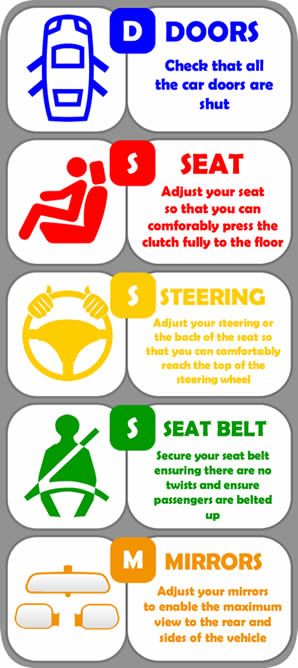 The metal BB’s will knock off most of the rust from the inside the tank with the help of the diesel fuel.
The metal BB’s will knock off most of the rust from the inside the tank with the help of the diesel fuel.
If your ATV has a carburetor, you will want to clean that out completely. You may want to just get a carburetor rebuild kit since you will have the carb already taken apart. Just spraying some carb cleaner in there may not be enough, you will probably need a rebuild kit.
They are pretty cheap and it’s recommended you rebuild the carburetor on a quad that has been sitting anyway. Here’s the link to a Carburetor Repair And Rebuild Kit on Amazon to give you an idea of you can expect to pay.
Check the fuel line coming from the tank and going to the carb. If you can get fuel to flow through the fuel line, then great. If you don’t have a nice continuous flow of fuel, will will need to clean out or replace the fuel lines.
If you are still having problems with the fuel system on the machine, check out this ATV Not Getting Fuel, Common Reasons And How To Fix article where I go into a lot more detail about the fuel system. But if you can at least clean the tank and the carburetor, you’ll probably be fine.
But if you can at least clean the tank and the carburetor, you’ll probably be fine.
If the air filter is in pretty good shape you might be able to re-use it. But for the most part, I would say it’s best to just replace the air filter altogether. Unless you have one of the re-usable type air filters like a K&N.
Getting a new air filter isn’t going to brake the bank, I recommend just replacing it. But if you do want to try salvaging the existing air filter, or you want to clean a re-usable air filter, check out my How To Clean The Air Filter On An ATV article, where I go through step by step how to get your existing air filter up to snuff on your machine.
Either way you need to make sure the engine is not going to be pulling in dirt, dust, or debris through the air intake. Even small amounts of sand can scratch the cylinder walls and cause you major problems with the engine. Since most ATVs that have been sitting tend to have dust, sand, and dirt collected, you have to sort out the air filter.
The oil in the engine will usually take longer to go bad than the fuel in the gas tank will, but the additives in the oil will eventually degrade over time. Since you’re supposed to regularly change the oil in the engine anyway, it’s a good idea to do an oil change before trying to start an ATV that has been sitting.
I suggest trying a synthetic blend or a full synthetic oil like this Castrol Power1 10W-40 Full Synthetic 4-Stroke Motor Oil. The reason I would choose synthetic oil is because it was made for older engines. The synthetic oil has additives that will help swell your gaskets, which will help prevent leaks and loss of compression in the engine.
Also, change the oil filter. A lot of people over look this simple step. Every time I do an oil change I change the oil filter out too. The filter could be holding gunk and other things that will contaminate your fresh oil change.
This is a good time to make sure the pistons aren’t rusted into place and the engine isn’t seized up.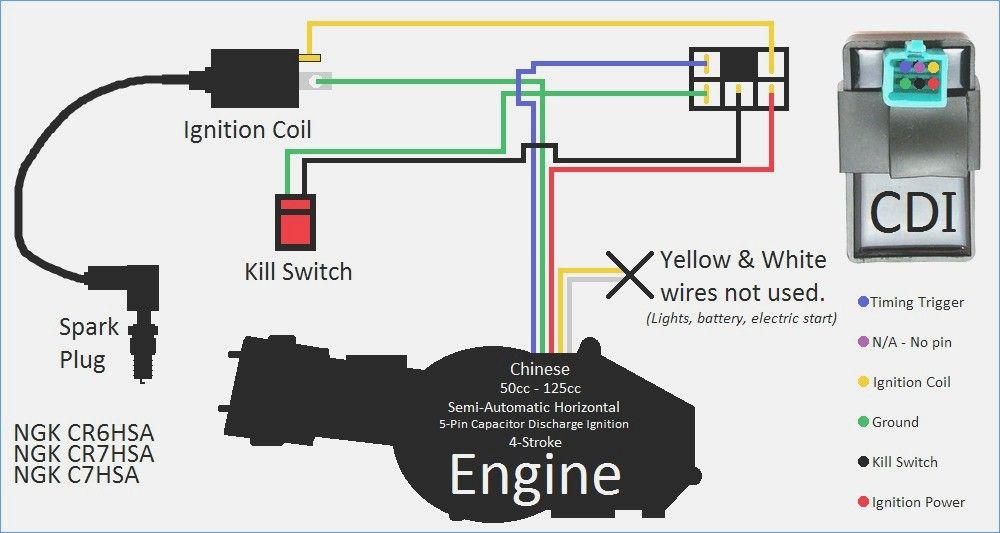 I like to add a little penetrating oil or deep sea foam into the cylinder head and let it sit in there a while. Simply remove the spark plug to spray a little sea foam into the cylinder head through the spark plug hole.
I like to add a little penetrating oil or deep sea foam into the cylinder head and let it sit in there a while. Simply remove the spark plug to spray a little sea foam into the cylinder head through the spark plug hole.
After letting it sit a couple hours (overnight if it’s real bad looking), I will try to turn it over with the spark plugs out to make sure everything moves the way it should. Since this is easiest done with the spark plugs out, lets talk about that next.
Change The Spark PlugsThe spark plugs on the ATV may be fine and not need to be changed. I know I change spark plugs all the time, and on a quad that sat for a while I would change the plugs out. But this step is really about making sure you are getting spark to the engine.
To do a quick check, simply remove the spark plug from the engine, insert it back into the spark plug wire, hold the electrode on the plug close to the engine or frame, and try to start the quad. If you’re seeing spark jump from the electrodes on the spark plug, you’re probably good to go.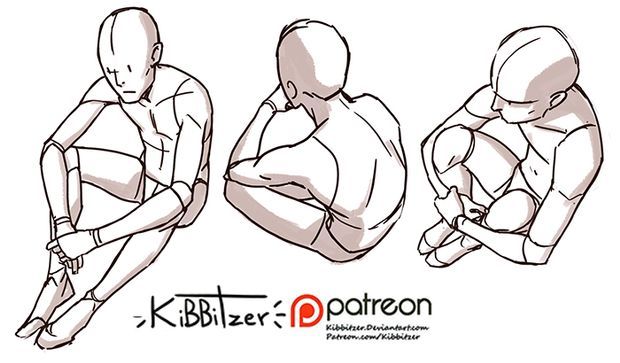
If you aren’t getting spark, try a new plug. If still no spark, you should check out my ATV Not Getting Spark, How To Fix article, where I go more in depth about the spark plugs and the electrical system troubleshooting on the ATV. Also, make sure you get the right spark plugs for your year, make, and model and that they are gapped correctly.
Change Differential Fluid (4X4)This step is only needed for 4X4 ATVs, and even then you may not need to do this. I usually do it just because I’m already changing all the other fluids anyway, so why not. Besides it’s just as easy as doing an oil change.
You will have a front and a rear differential, you’ll want to change the oil in both. The important thing for differential oil is to use the one that is recommended for your machine. You’ll have to look through your service manual or call the dealer to find out.
There are a few different types and different manufacturers recommend using different oils. Using the wrong one might cause damage to your differential. Once you have the right diff oil, all you need is some socket wrenches and a drain pan.
Using the wrong one might cause damage to your differential. Once you have the right diff oil, all you need is some socket wrenches and a drain pan.
There will be a drain plug and an inspection plug for both front and rear differentials. First remove the drain plug and let all the diff oil drain. If you notice metal shavings in the oil, you could have a gearing problem. If you notice water or mud in the oil, you may have problem with the seals.
Once the oil has drained put the drain plug back in and remove the inspection plug. This is where you fill the differential with new diff oil. If the oil bottle doesn’t have a fill spout, you may need a funnel for this part.
Fill the differential with oil until it starts coming out of the inspection hole. Let it drain out until it is barely trickling, then replace the inspection plug. That’s it, follow those steps for both front and rear and you should be good to go.
Charge Or Replace BatteryDepending on how long the ATV has been sitting, you may be able to use the existing battery, it will just need to be charged.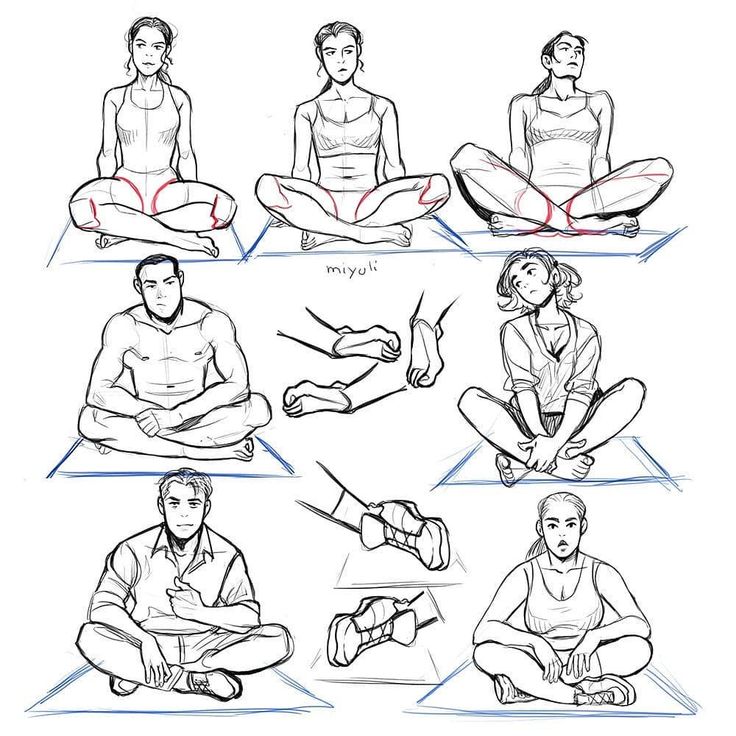 But if it sat for anything over a year, you’ll probably need to replace the battery all together.
But if it sat for anything over a year, you’ll probably need to replace the battery all together.
If you need some tips on what charger to use or how to charge an ATV battery, check out my How To Charge An ATV Battery article. But most likely, this won’t help you all that much and you’ll end up needing to get a new battery.
You can usually get an ATV battery at your local auto parts store or at an ATV dealer. But I’ve been able to get batteries online for cheaper than they charge in the store. If you can wait for shipping, just get an ATV Battery On Amazon.
Alright, you’ve done the tune up, now it’s time to try starting up the ATV. Put some fresh fuel in the tank, make sure the kill switch is on run, the key is on, and give it a go.
ATVs that have been sitting may be a little harder to start, especially older models. Give it some time and be patient, but not so much that you kill the battery trying to start it.
If you do get it running, I suggest putting some fuel system cleaner in with the gas and letting it run with that in it for a little bit. That way it can really clean out the rest of the engine. I use this Gumout Complete Fuel System Cleaner in my quads about once a year, and it works great.
If you still can’t get the ATV running, you may have bigger problems you need to dive into. Most likely you have a problem with spark, fuel, or compression. Those are the most common reasons an ATV fails to start up.
To get more in depth step by step instruction to troubleshoot why your ATV still won’t start up, check out my ATV Won’t Start, Common Problems And How To Fix article. That article will solve 90 percent of the reasons an ATV won’t start.
Sharing is caring!
Written by Brent Huntley in ATV Maintenence
An ATV that won’t start after sitting all winter can be a real pain. You might get it to turn over, only to have it die seconds later. Before you throw in the towel, there may still be hope for your ATV to start again. Using a checklist of common problems related to your ATV sitting all winter should help you to fix your ATV and get it running again.
You might get it to turn over, only to have it die seconds later. Before you throw in the towel, there may still be hope for your ATV to start again. Using a checklist of common problems related to your ATV sitting all winter should help you to fix your ATV and get it running again.
How to start an ATV after it has been sitting for winter? Starting an ATV after it has been sitting all winter may require some standard tune-up maintenance including:
If you think that your ATV is not severely damaged and may have been sitting too long, this article will give you the details about cleaning, replacing, and fixing the critical components needed to get your ATV running again. Read on to find out the most common fixes for an ATV that won’t start after sitting for winter.
Starting an ATV After it Has Been Sitting for WinterATV’s and UTV’s usually sit idle and unused during the winter months. Proper storage of an ATV can help to keep all of the engine components clean and working. However, if the ATV has been sitting for a long time in poor conditions, improper storage, or just for an extended time during a long winter, several things could cause it not to start or run correctly.
Proper storage of an ATV can help to keep all of the engine components clean and working. However, if the ATV has been sitting for a long time in poor conditions, improper storage, or just for an extended time during a long winter, several things could cause it not to start or run correctly.
Let’s check out the three most common fixes for an ATV that has been sitting for winter in more detail.
Flushing and Replacing Engine Fluids in your ATVWithin the engine of your ATV, several critical fluid types may have fouled if there is improper storage in poor weather conditions. Fouled fluids in the engine are especially common if the ATV was sitting somewhere below freezing or in excessive heat (not a winter problem, but good to know). Essential fluids to flush or replace are:
The best way to check if the fuel in your ATV tank has gone bad is by the smell and color. Bad gas has a sour scent and darker color. Even the consistency will look and feel gummy, which means the gas has begun to deteriorate and is less combustible. This usually only happens after about six months of gas sitting without being used, but it can happen sooner than that.
Bad gas has a sour scent and darker color. Even the consistency will look and feel gummy, which means the gas has begun to deteriorate and is less combustible. This usually only happens after about six months of gas sitting without being used, but it can happen sooner than that.
The steps that need to be taken to flush and replace fuel tank fluids are:

Changing out old engine oil is an essential maintenance procedure that should be done on your ATV yearly. This is especially true if the ATV was run for long periods and many miles the year before and stored in extremely cold or hot temperatures.
The steps that need to be taken to drain and replace the engine oil on your ATV are:
 You can remove the oil filter after the oil in the engine has completely drained.
You can remove the oil filter after the oil in the engine has completely drained. 
If you have an older ATV with an old battery, you may either charge the battery back up to powerful enough to start the engine or completely replace the battery. Batteries tend to lose power as they sit in the cold, so if your ATV was stored all winter in the cold, you might need to charge it back up or replace it.
How to Charge your ATV BatteryIf you don’t feel you need to change the battery completely, you can use a battery charger or follow these easy instructions to charge your battery:

If you try to recharge it and can’t get it to take or keep the charge, follow these easy instructions to replace your ATV battery:
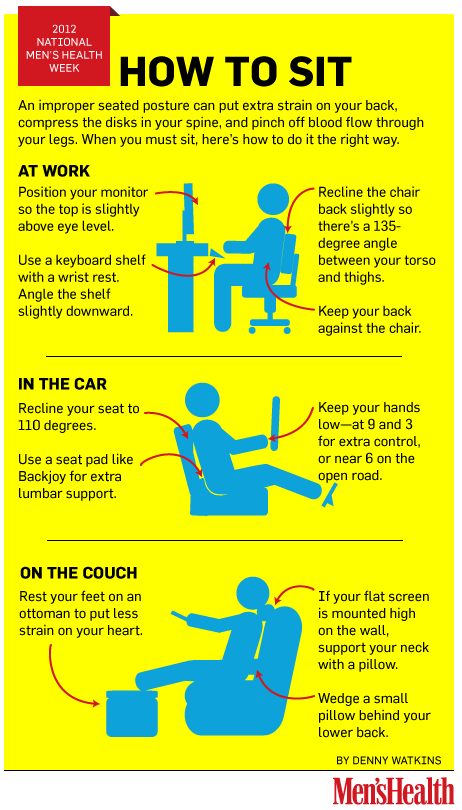 By using a socket wrench or screwdriver, you can loosen and remove these connectors.
By using a socket wrench or screwdriver, you can loosen and remove these connectors.If you have questions about what battery to put in your ATV, head over to this article to figure it out.
How to Clean the Air Filter in your ATVAnother common problem that an ATV which has been sitting may experience is not getting enough air into the fuel mixture. If the fuel is not getting oxygen, the engine’s combustion will be inconsistent and could cause the engine to stall or not start. The most obvious culprit for oxygen/fuel mix problems is a bad or clogged air filter.
Unlike car air filters, ATV air filters are made to be cleaned several times until dirt and debris build-up. Follow these easy instructions to clean the air filter on your ATV:
Follow these easy instructions to clean the air filter on your ATV:
ATV’s have many components and systems that may need to be cleaned or replaced if they have been sitting in extreme weather conditions or are stored all winter long. By following one or all of these guidelines in this list, you can adequately care for your ATV and get it running again for the spring and summer months.
By following one or all of these guidelines in this list, you can adequately care for your ATV and get it running again for the spring and summer months.
My New Favorite Accessory for Winter Riding
Over the past several months, as the weather has gotten cooler, I have been testing out the Venustas Heated Vest for my cold-weather photography. I wrote all about it over at Photography &...
Continue Reading
link to How To Use An ATV SpreaderHow To Use An ATV Spreader
One of the greatest things about summer is yard work. As the heat and humidity rise, so do the plants and flowers. The advent of technology has made seeding and fertilizing, a job that used to...
Continue Reading
Content
New models of ATVs are equipped with an electric starter. Therefore, problems with starting almost never arise. But in older models, manual kick starter can be installed. With him, beginners sometimes have difficulties.
Therefore, problems with starting almost never arise. But in older models, manual kick starter can be installed. With him, beginners sometimes have difficulties.
To start the ATV, do the following:

Start the CFMOTO 500 with a manual starter?
Watch this video on YouTube
Paradoxically, but sometimes the owners of ATVs simply forget to pour gasoline into the tank. Therefore, before proceeding with the diagnosis, it is worth checking the fuel level. nine0009
It is not uncommon for the cause of the problem to be insufficient battery charge . It can be charged at home. If the ATV is small, you can purchase an additional battery. The cost of batteries for budget models is relatively low.
It can be charged at home. If the ATV is small, you can purchase an additional battery. The cost of batteries for budget models is relatively low.
How to start an ATV?! If the battery is dead!? Life hacks! Subscriber reply | Irbis Atv 250s | SJ8Pro
Watch this video on YouTube
If the battery is good, but the starter does not work, it may be worth looking for the cause in the starting system. It is necessary to try to close the contacts, which are located on the starter relay. To do this, you need to use a screwdriver. The relay is usually located under the seat. Two thick wires are connected to it.
If you need to find a way to start the ATV without a key, you can also follow these steps. This technique will be effective only if the system is not controlled by the central computer . Otherwise, blocking will work.
If, after the manipulations, the engine starts up, then the problem is in the launch system . Otherwise, you will need to look for the cause of the malfunction further or visit a service center.
Otherwise, you will need to look for the cause of the malfunction further or visit a service center.
Each ATV has a stop button on the steering wheel. Usually it is red. This button is responsible for turning off the ignition, it turns off the engine . If you do not bring it to its previous position, the engine, of course, will not start. Therefore, it is worth checking in what position the "Stop" button is located.
Another security system provided in ATVs is a special check. This is a cable that is attached to the ATV at one end and to the driver at the other. If the latter falls off the ATV while driving, check flies out and the ignition turns off. You won't be able to start the vehicle without this receipt either. If this part is lost, you will need to look for the appropriate contacts and close them directly. nine0009
Another possible reason why the ATV won't start is a blown fuse. If the ATV is small, there is usually only one fuse. It is located next to battery . The suitability of this part for operation can be assessed visually. The cost of the fuse is cheap, so it is better to have several of these parts in stock.
If the ATV is small, there is usually only one fuse. It is located next to battery . The suitability of this part for operation can be assessed visually. The cost of the fuse is cheap, so it is better to have several of these parts in stock.
If there is no spare fuse, and the failure happened away from home, you can insert wire instead. This is a temporary solution that will allow you to get home. It is impossible to constantly replace the fuse with wire. You can burn much more expensive elements of the system.
This part is located under the seat or next to the motor (depending on the model). It's a small box with wires coming out of it. They are connected to the ignition coil. It is difficult to assess the health of this part, so it is better to contact a service center with a similar problem. nine0009
If the spark plug wire is broken or the ignition coil is broken, it will not be difficult to check the performance of these systems. The candle is unscrewed and inserted into the candle cap. Next, you need to attach it with the metal side to the engine and press the starter button. If there is no spark between the electrodes, this is a sign of a breakdown. Try cleaning the spark plug electrodes and adjusting the gap between them.
The candle is unscrewed and inserted into the candle cap. Next, you need to attach it with the metal side to the engine and press the starter button. If there is no spark between the electrodes, this is a sign of a breakdown. Try cleaning the spark plug electrodes and adjusting the gap between them.
If there is a spark, then the problem lies either in the candle cap or in the candle. You need to buy a new part and change it. nine0009
It will be possible to eliminate many malfunctions and start the ATV even in the forest. For models with a manual transmission, you can try to start the engine from the pusher. It should be said right away that this cannot be done with an automatic transmission. In other cases, it is recommended to look for the cause of the breakdown according to the points listed above.
How to start an ATV with a PUSHER
Watch this video on YouTube
Maxim Rogov / author of the article
Back in 2011, I got on a motorcycle for the first time and since then I have been addicted to motorsport. I love trying new bikes. I dream of a BMW F800GT and a motorcycle tour of Peru.
I love trying new bikes. I dream of a BMW F800GT and a motorcycle tour of Peru.
Every ATV owner sooner or later faces a breakdown. And it doesn’t matter if you decide to buy an inexpensive ATV or a branded device. Of course, this is an unpleasant situation, but most problems can be fixed by hand. So let's figure out what to do if the ATV does not start. nine0009
Constant driving to the limit and improper operation of equipment often causes a number of breakdowns. Due to high loads, the following may fail:
But most often, problems arise because of some trifle, such as low-quality gasoline, lack of oil or improper preservation of equipment. nine0009
The first thing a motorist should do if the ATV does not start or stalls is to check the gas tank.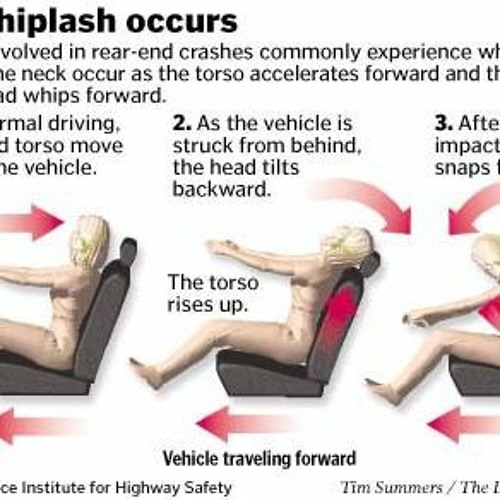 If the fuel is idle for a long time, it may evaporate, and if the tank is empty, gasoline should be added. But if there is fuel in it, it is advisable to drain it. Very often, low-quality fuel comes across, which after a while simply ceases to ignite.
If the fuel is idle for a long time, it may evaporate, and if the tank is empty, gasoline should be added. But if there is fuel in it, it is advisable to drain it. Very often, low-quality fuel comes across, which after a while simply ceases to ignite.
Don't forget the oil. If a low-quality liquid was poured into the system, the device will lose dynamics and may even stall. This problem is especially relevant for four-stroke quads, since their power unit must literally “float” in oil. nine0009
Another reason why the ATV does not start is improper preservation of the equipment. Even if you leave the device for a day in the garage, it must be prepared for downtime, otherwise starting the engine will be a real test.
Preservation required:
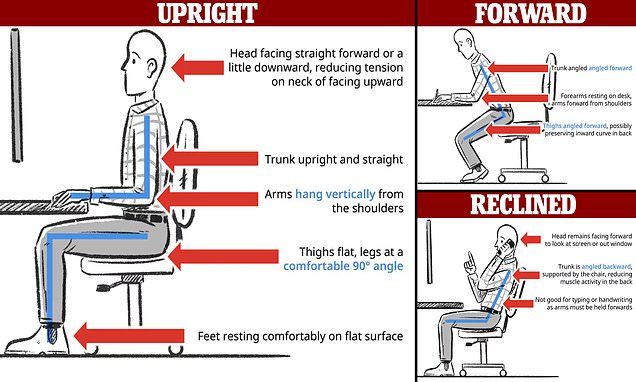 This takes approximately 5-10 minutes. nine0016
This takes approximately 5-10 minutes. nine0016 Many riders ignore this simple procedure, but it is the one that most often causes starting problems. For example, it is almost impossible to immediately start a “cold” engine. Therefore, the driver begins to methodically press the "start" button, and at this time the battery is discharged. After 10-15 attempts, the battery runs out, and it becomes unrealistic to start the equipment. nine0009
Important: In severe frost, it is imperative to carry out conservation of the ATV. If this is not done, condensation will collect at the bottom of the carburetor, and the quadric will have to “warm up” for several days.
ATV won't start due to starter or bad contacts. In this case, you should:
But what if the Chinese ATV won't start due to problems with the starter in the field or away from home? In this case, the rider needs to close the relay contacts with a screwdriver. Thus, the rider will be able to start the device bypassing the faulty starter. nine0009
No spark is another simple but annoying failure. It usually occurs due to damage to the coil or a break in the wires that go to the candle. Solving the problem is easy. The rider just needs to unscrew the candle, insert it into the cap, attach it with a metal part to the motor and press "start".